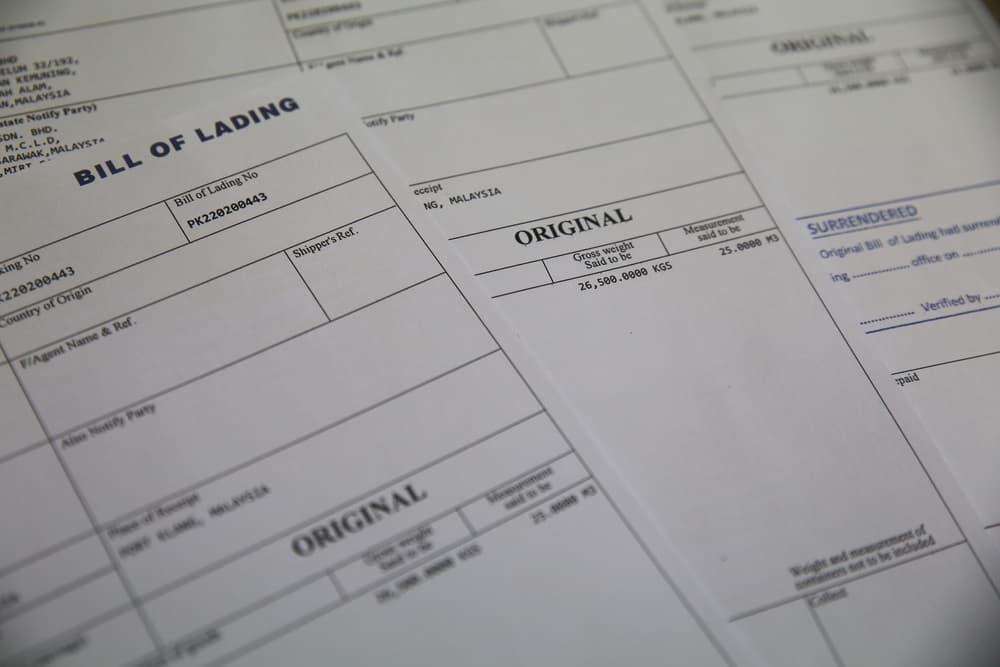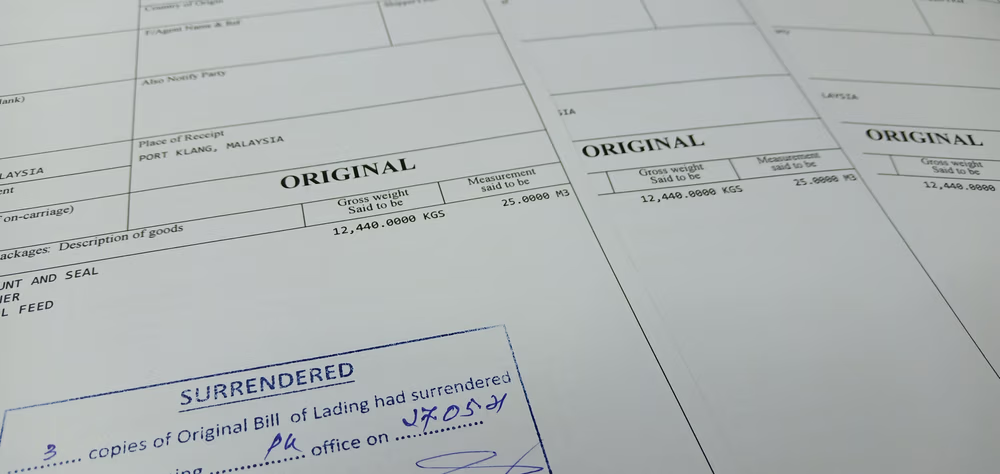Get answers to crucial supply chain documentation questions, like what a bill of lading is and why a BoL is vital to the shipping process.
Every year, billions of tons of cargo are shipped all over the world, and nearly all of them come with a bill of lading. But what is a bill of lading (BoL), and why is it so important?
Throughout any distribution channel, documentation is crucial for keeping everyone on the same page and ensuring shipments arrive on time and exactly as requested. A bill of lading is an essential part of this documentation.
This comprehensive guide will define BoLs and explain their importance to international trade.
What is a bill of lading, and why is it important?

A bill of lading is an important legal document in the procurement process that travels with shipped goods. It represents an agreement between the carrier and shipper, laying out essential details of the shipment.
A bill of lading is significant because it serves several essential functions, including:
- Serving as proof of ownership for the goods listed in the document
- Confirming the carrier picked up the cargo
- Documenting that the buyer received the items shipped
- Detailing the agreed-upon terms and conditions of the goods’ transportation
A BoL is both a preexisting document (meaning it contains details agreed upon before the cargo is loaded) and a work in progress (as the document will be signed by the carrier, shipper, and receiver over time).
Who issues a bill of lading? That responsibility falls on the transportation company (the carrier), but the shipper and receiver must sign off before the document is binding.
What does a bill of lading include?
These documents differ depending on the type of cargo involved and the specific wishes of the buyer, seller, and carrier. But a typical bill of lading template includes these elements:
- An account or purchase order number
- Date of shipment
- Contact information for the shipper
- Contact information for the recipient
- Description of the items being shipped
- Number of items being shipped (by unit or pallet)
- Cargo value
- Cargo weight
- How the cargo is packaged
- Special designations, such as whether the shipment contains hazardous materials
- National Motor Freight Classification (NMFC)
- Any additional pickup or delivery specifications, as agreed upon by all entities prior to shipping
Types of bills of lading
A bill of lading may be classified based on how it’s executed or the method of operation. Here are some of the common types you may encounter:
Straight bill of lading
This non-negotiable version of a bill of lading is used when the cargo has already been paid for. All the receiver must do is offer identification when they accept the goods. There are no adjustments to a straight bill of lading; whatever was negotiated before shipping stands.
Short-form bill of lading
Some carriers use this pared-back version of a straight BoL to save time. However, the lack of printed terms and conditions, which usually appear on the back of the document, can make some customers feel less secure.
Blank-endorsed bill of lading
A blank-endorsed BoL doesn't name a specific recipient, so the carrier has possession of the cargo until further terms are negotiated.
Negotiable bill of lading
Sometimes, the shipper has specific terms and conditions they want met before the receiver gets to take off with the items. For example, some shipments are made based on credit, or ownership is transferred at the destination by simply endorsing the bill.
Onboard bill of lading
Typically required by financial institutions bankrolling a shipment, onboard BoLs include a note stating that the items on board were received in good condition and are being shipped on the indicated vessel.
Ocean bill of lading
If a shipment is routed across international waters, the carrier must have an ocean bill of lading as proof of contents. This BoL doubles as a contract between the shipper and the carrier.
Express bill of lading
Carriers often use this expedited version of a BoL when the importer paid for the shipped items ahead of time or used vendor credit. Rather than carrying a detailed document, the carrier has a basic release of goods agreement. Without payment hanging in the balance, the carrier can simplify documentation and release cargo without the need for a physical BoL.
Bill of lading example

Wondering how to make a bill of lading? To get a better handle on this process, it may help to read through an example of how a BoL fits into the broader procurement process.
Imagine that Acme, Inc. needs 100 widgets to complete a batch of products due to market in the coming months. They already know the specs for those widgets and have a vendor in mind, so they create a purchase order and send it to the chosen supplier, Widgets R Us.
In this instance, Widgets R Us is the shipper, and Acme is the receiver.
Widgets R Us acknowledges the purchase order, gathers the requested widgets, and calls up an overnight carrier who can get the products to Acme in record time. An agent for the carrier arrives at the Widgets warehouse with a bill of lading in hand. A Widgets rep signs the BoL, and the carrier is on its way.
The next day, the carrier arrives at Acme HQ, widgets in tow. The designated receiver at Acme reads through the BoL and compares the information to the details listed on the original purchase order. If everything is accurate, the shipment is accepted.
Soon after, the purchase order and BoL are forwarded to whoever is responsible for approving payouts — perhaps the VP of accounts payable. That person double-checks the documentation and then pays Widgets R Us for the items shipped.
Bill of lading versus invoice
Supply chain management incorporates many documents, and it’s easy to get them confused. Bills of lading and invoices are sometimes conflated, but these two documents have distinct purposes.
As discussed above, a bill of lading is a legal document outlining and governing an agreement between a shipper and the carrier tasked with delivering its cargo. A BoL has little to do with pricing and payment, unless the terms and conditions address the transfer of ownership due to payment on receipt or bank funding.
Conversely, an invoice documents a specific exchange of goods, including the necessary payment. It lists what’s being sold and how much it’s being sold for, often including other significant conditions, such as when payment is due and how it should be made.
Another common source of confusion is waybills versus bills of lading. The most significant difference is that a waybill is used solely for informational purposes, whereas a bill of lading carries legal weight. The conditions are different, too; involved parties may be able to negotiate a bill of lading, but the information on a waybill is essentially set in stone.
Automate your supply chain documentation with Orderful
Supply chain documentation can be tedious, but adopting automation software and processes like electronic data interchange (EDI) can make your job a whole lot easier.
To learn more about how our modern, cloud-based EDI can standardize and streamline communication between you and your partners, speak to an expert at Orderful today.
